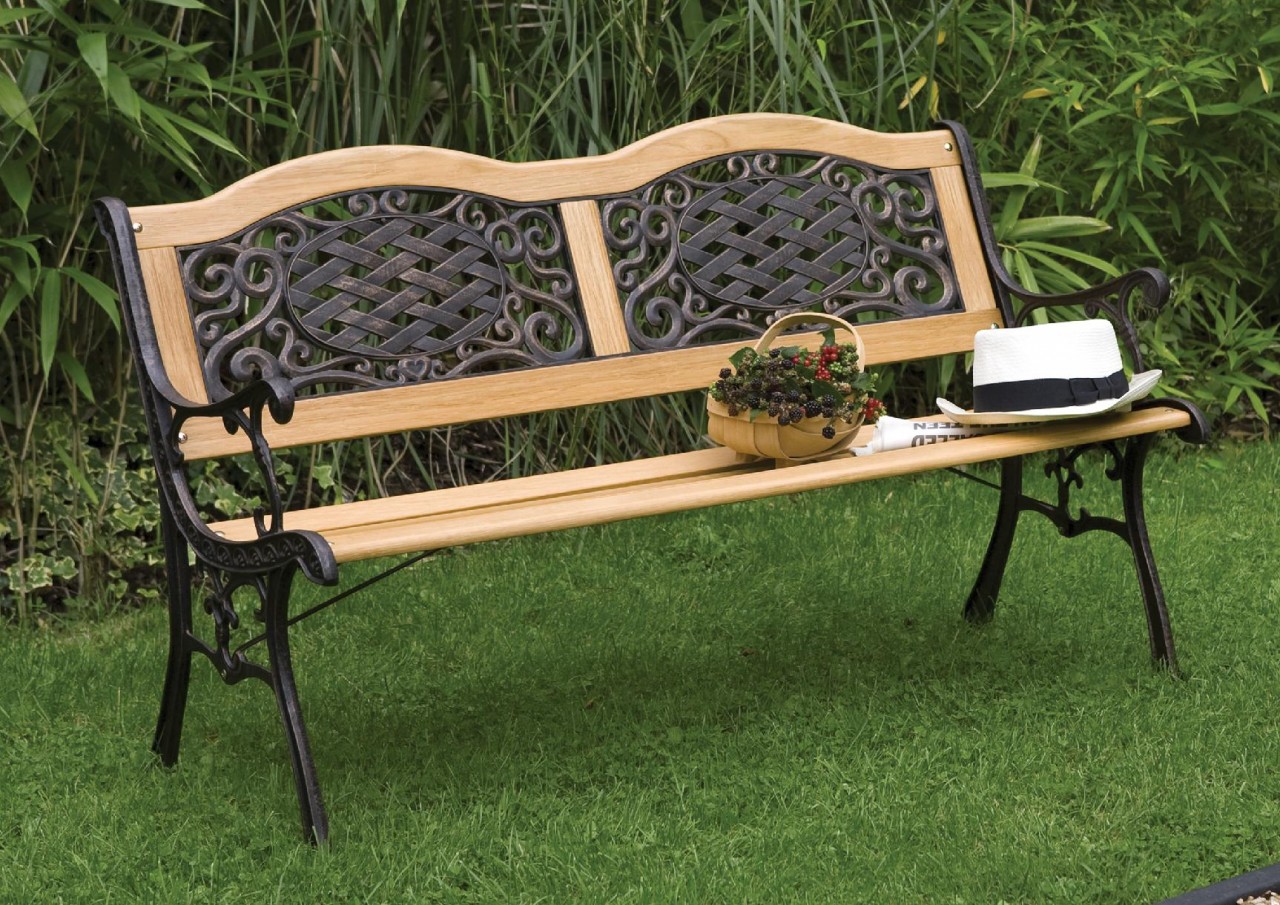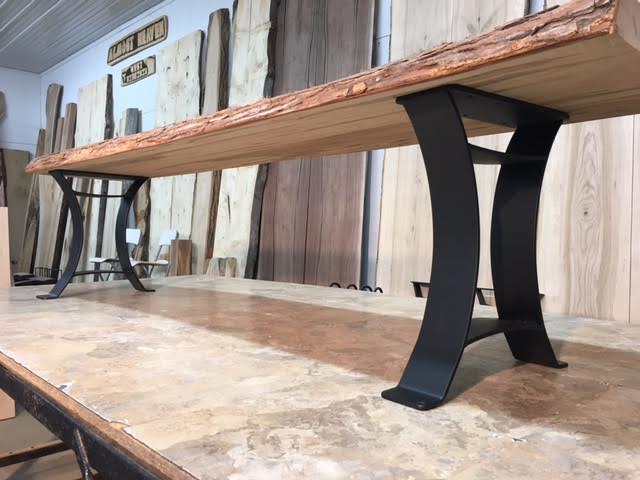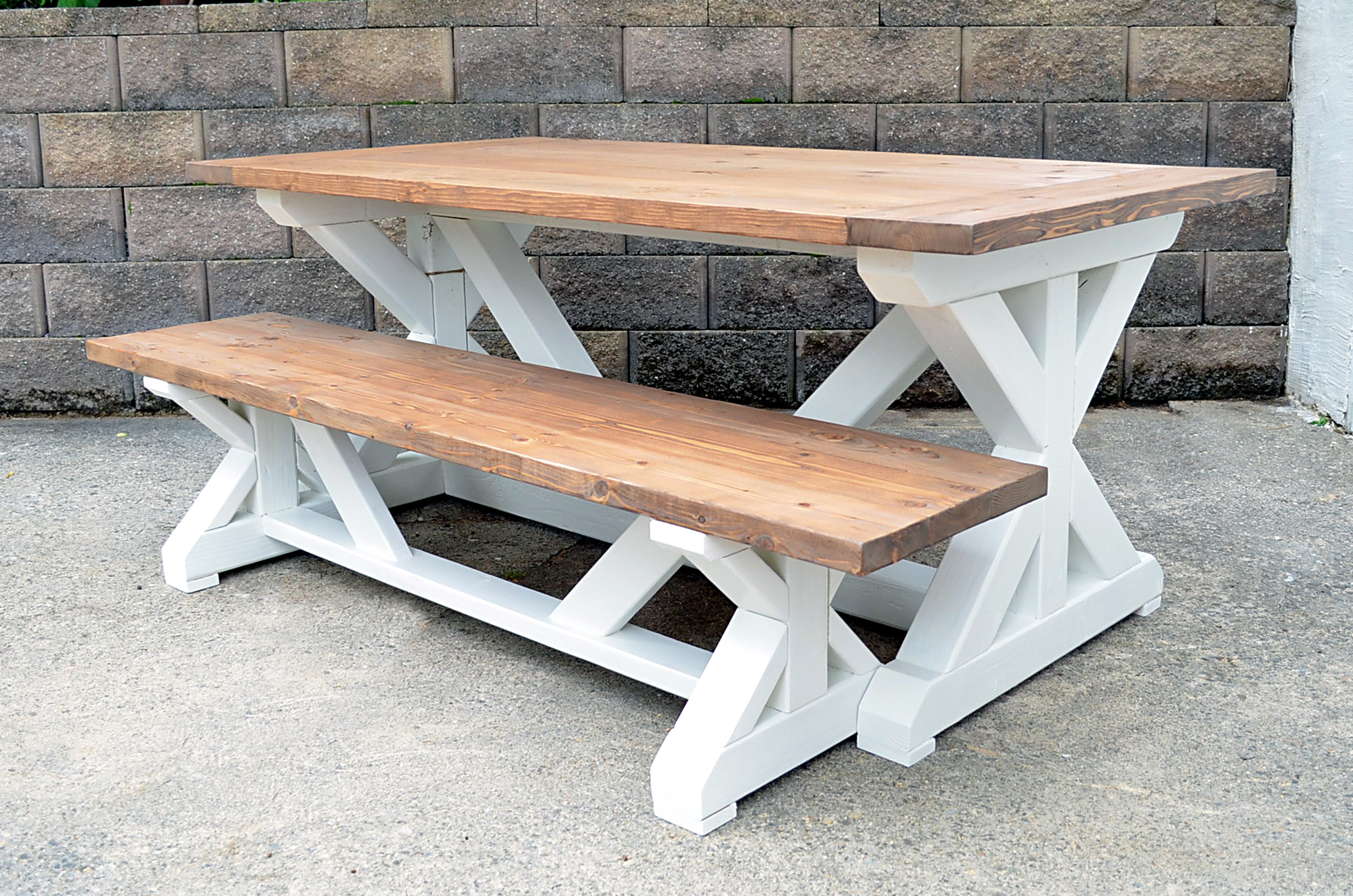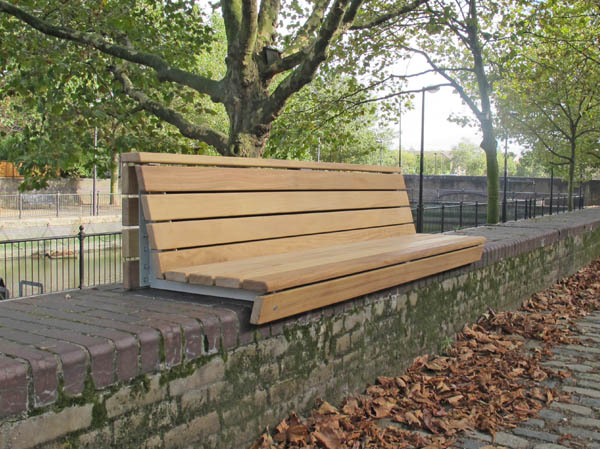
How to set outdoor garden bench? Step by step guideline
A bench made for indoor or outdoor use. An off-axis loop connects to two legs, each of which is carved by hand (with some help from an angle grinder) in a fluid form. The legs and the steam-bent slats add aesthetics to this great project. The upper part of the seat swings over the loop thanks to the tensioned cables at each end and a thin strut.
The bench was produced in European oak allowing indoor or outdoor use and finished with a combination of reflections stained blue and oil. The bank measures; 1600 mm long, 450 mm high and 300 mm wide.
Main tools that I used for outdoor garden bench
- Circular saw and miter
- Router
- Angular grinder with a wood carving disc
- Drill
- Chisels
- Clamps
- Measuring tape
- Drainpipe
- External wood glue
- Sandpaper, wood dye, oil, etc.
Materials:
- European oak: Good for bending and exterior
- Aluminium tube
- Galvanized steel cable
Step 1: The design
In my original sketch for this bank, the loop was centralized, which would have allowed the upper part to be supported only by the tensioned cables … When the project came to an end and I started to test it, it became clear that there was something a little loose . I could support myself sitting on the other end, but I just did not feel strong enough.
Therefore, I ended up adding some steel rod to give it some additional support (I always had a backup plan …) I was able to get away with a diameter that was thin enough not to be removed from the focal point, loop or loop.
I have attached the list of cuts for the main components (for the legs you will need to cut several times to paste to the required thickness) and the PDFs of the approximate templates with which I worked. These were printed at full size and give a pretty good starting point …
The bank has been in use for a couple of weeks now and I’ve noticed something that probably has to go back to work … The bent legs bend and become flatter, which makes it difficult to tension the stability rig. A different way of making legs is a good idea if you are planning to do something similar.
Step 2: The loop
I started cutting a board to the correct width for the segments that would make up the loop. To calculate the width, you need to know how many segments you are using and the diameter you want the loop to have. From the diameter, calculate the circumference and then divide it by the number of segments. This will give you the width of the segments.
The segments were then cut to length. I wanted it to be narrowed so that the segments would be reduced in size, but could have the same length. The segments needed to be mitred at the edges, I was using 18 segments, so I needed a 10 ° groin on each edge to compose 360 °. I made a template with a stop that was adjusted to the required width of the blade, this meant that each segment could easily be fastened and fit beautifully to the required dimension. If you have a table saw, it would be better!
The segments were glued together, with ratchet straps to compress them during drying. Once dry, an angle grinder with cutting disc was used to start making the outer round. A combination of this, a spokeshave and a sander were used until I was happy with the ’roundness’. Then I used a compass to follow the outer diameter and mark a line so that the internal diameter works. Again, it worked until I was happy with the form.
Then two leg slots were cut by drilling two holes and cutting the center with a reciprocating saw. I ended up putting a bit of a curve across the width of the loop as well.
Step 3: The legs
I started cutting the rough profiles of the legs based on the templates of my CAD. For the longest leg that I had to join two pieces of wood to get the required length, we used a mortise and spike for this.
The wood that I was able to obtain was not thick enough for what I needed, so several pieces had to stick together. The difficult task was to shape the ends of the legs so that they fit comfortably into the slots that would cut into the loop, while adjusting to the outside diameter of the loop. I started cutting out some card templates so they fit in the slot and then, using chisels and a little patience, I finally got a pretty nice fit.
Now the fun part, forming the legs. The curves / lines to work were drawn … I just resolved this as I went to get a shape that I was happy with. It is very effective in removing a large amount of material quickly and is what I used to use to shape it. After this, I used a spokeshave to refine the form, a lot of work, but I’m happy with the result.
Step 4: The base
I wanted to incorporate the curve (loop or loop) of steam into this project as something I had not used before. I took quite subtle curves for this first attempt.
First I made a plywood fold. Then a router was used for the wood to the required thickness ~ 20 mm. I made a template to support the Router on the table.
My ‘steam box’ is made of some drainage pipe wrapped in insulating aluminum foil (to keep warm) and a screen vaporizer is used to produce steam. The wood was placed on the steamboat for about an hour, after which it was immediately placed in the mold and squeezed. It is crucial to do this quickly before the wood starts to cool.
The connection to connect them to the legs was then cut. The depth stop in the groin was hooked to produce a recess that was then cleaned with a chisel. Then, they stuck to the legs and finally joined the loop.
Step 5: Top of the seat
Another board for the bottom part and cut to the required width. 4 pieces of equal size for the slats and a slightly wider piece for the central column.
The curve of the spine was drawn and then cut with a saw. Notches were cut for the transverse parts and a hole for the pivot pin was drilled. The transverse parts were cut; corresponding notches cut to join the spine and others for the slats.
More steam curvature was used to bend the splints in the same curve as the top of the spine. Once again, a simple shape was struck on a wooden veneer that it had and the individual slats attached to it. Once folded, the slats were moved to a cooling template.
Once all the slats were bent and the holes were cut, the top was glued and clamped
Step 6: Finishing and assembly
Everything was sanded and I used a blue wood finish to color particular parts. Then an oil for outdoor furniture was applied to seal the wood, 3 layers in total.
The upper part is seated on the loop and an aluminum pin inserted to join them. A thin rod was added at the end of the displacement side and then the cables were tensioned to prevent rocking.
The last thing for the outdoor garden bench was to add some pieces of rubber to the bottom of the pates and it’s over!








